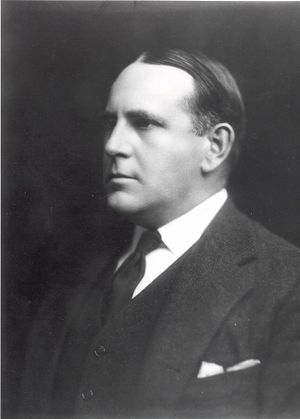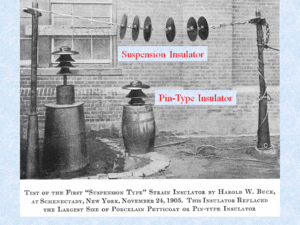Harold Buck
- Birthdate
- 1893/05/07
- Birthplace
- New York, NY, USA
- Death date
- 1958/08/05
- Associated organizations
- Niagara Falls Power Company
- Fields of study
- Power
1916 -1917
Harold W. Buck, AIEE President, 1916 - 1917, supervised the experimental work that led to the development of the oil circuit breaker and other high voltage devices while working at General Electric Company. He also worked as the chief electrical engineer at the Niagara Falls Power Company, where he worked on the distribution of power across the U.S.-Canada border.
Biography
Buck was AIEE president from 1916 to 1917.
The engineering achievements of Harold Winthrop Buck have been principally in the field of construction of public utility properties. As an electrical engineer in charge of design and construction, in the earlier period of his career, and more recently as an executive of the corporation of Viele, Blackwell and Buck, consulting engineers, New York City, he has been identified with many important enterprises in the development of electric power.
Buck was born in New York City, on 7 May 1873. In 1894, he graduated from Yale University with the degree of Ph.B., and received the degree of E.E. from Columbia School of Mines in 1895. The year 1895-96 was spent as a student in the shops of the General Electric Company at Schenectady, New York, most of this time being spent on experimental work on a-c apparatus for Dr. C.P. Steinmetz.
From 1896 to 1900, Buck was assistant to the chief engineer of the lighting department of the General Electric Company, Schenectady, in which capacity he had much to do with the introduction of high-voltage a-c distribution in many parts of the United States. During that same period, he also had charge of much experimental work leading to the development of the oil circuit breaker and other high-voltage devices.
In 1900, he was chosen chief electrical engineer of the Niagara Falls Power Company and allied interests at Niagara, having entire charge of electrical engineering in the design and construction of power house No. 2 on the American side of the Falls, and the Canadian Niagara Power Company's plant on the Canadian side; also the terminal stations at Buffalo, and the engineering in connection with the distribution of power in Niagara, Tonawanda, and Buffalo.
In 1906, in cooperation with E.M. Hewlett at Niagara Falls, Buck carried on experimental work on high voltage insulators which had much to do with the development of the suspension insulators now in universal use.
In 1908, Buck became vice-president of Viele, Blackwell and Buck, engaged in the design and construction of hydroelectric and steam power plants and of transmission systems in the United States and Canada. In 1925, the International Commission made him consulting engineer on the investigation of the development of some 4,000,000 hp at various sites on the St. Lawrence River between Ogdensburg and Montreal.
Buck presented a number of papers before the Institute and other organizations. In addition to serving the Institute as president, he was manager 1907-10, and vice-president 1910-12. He served on seven of Institute committees, as well as having been its representative on three other organizations. His longest term of service was on the Institute's committee on public policy (now Institute policy) on which he served continuously from 1914 to 1929, with the exception of one year. Buck was also a member of the Franklin Institute, the American Electrochemical Society, and the Engineering Institute of Canada.
Further Reading
1917 Presidents Address - Presented at the 332nd Meeting of the American Institute of Electrical Engineers, New York, June 27, 1917.

